Quality text is text that meets the needs of readers and the task, develops background information and vocabulary, and stretches readers to prepare them for college and careers. Text meets a variety of demands: to inform, entertain, persuade, and explain. Text is not defined as “quality” without context. The reader is the determining factor. The Science of Reading tells us that to grow and achieve, readers need grade-level text with progressively more complex language structures about history, science, popular culture, art, and recreation.
So how can you determine the best complex text for your students? the Louisiana Department of Education provides three steps to follow.
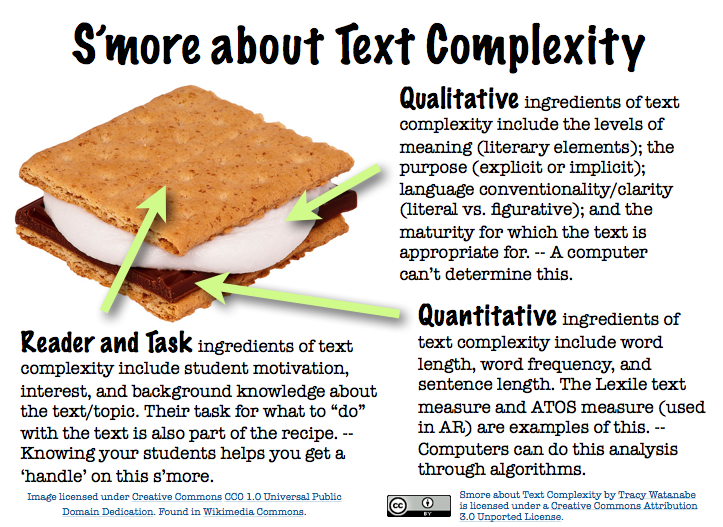
This infographic provides another way to look at and consider the components of text complexity. Take a few minutes to read the key points. Then conisder these questions:
Quantitative Measures
Supporting equity in the classroom includes providing grade-level text for all students. Tier 1 instruction should include high-quality instruction for all students using quality complex texts, scaffolded as needed. Using quantitative measures is the first step in finding the best text for your students.
Using the Lexile Framework for Reading as a guide, educators can personalize student learning and help learners become college and career ready. This measures text difficulty or a student's reading ability level. Many educators use other measures as instructed by their districts, but the Lexile Framework for Reading is universal. The crosswalk below is from Achieve the Core and is based on a guide from Common Core Standards. It provides several measurements to help educators find complex text for students.
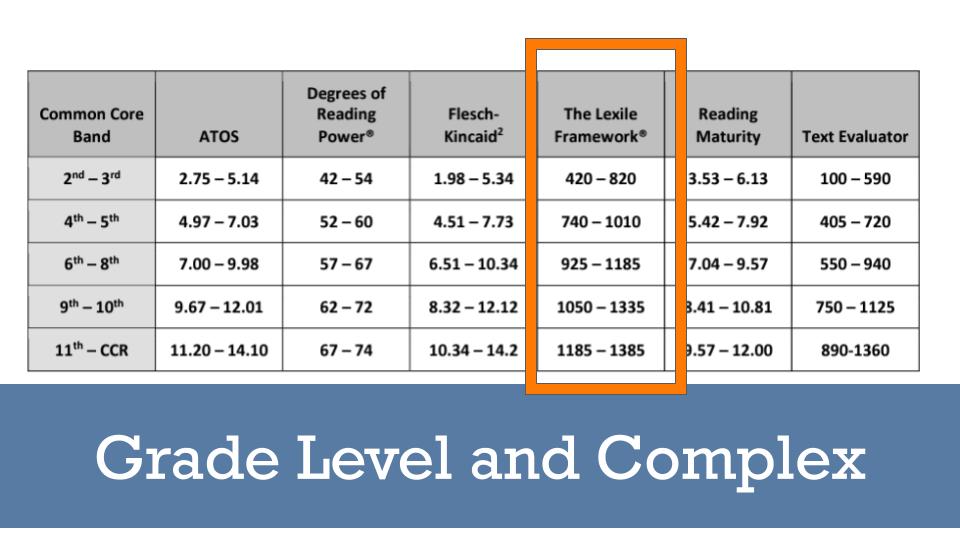
Additionally, this chart from the Lexile Framework for Reading outlines the text ranges for college and career readiness.
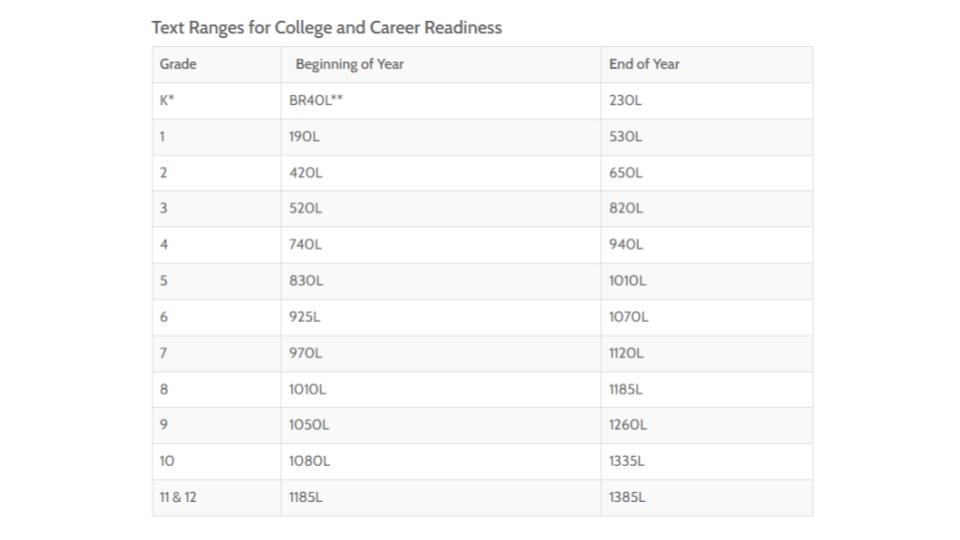
As noted in the lesson Why is Quality Text Important? Shanahan promotes providing difficult texts for students but also reminds us that flexibility is key, and that "reading should vary greatly in difficulty, from relatively easy texts that would afford students extensive reads with little teacher support, to very demanding texts that could only be accomplished successfully with a great deal of rereading and teacher scaffolding. I believe that much is learned from that kind of varied practice."
Qualitative Measures
The next step in determining whether text is complex is identifying features that make it challenging. Achieve the Core provides helpful rubrics to evaluate the complexity of both informational and literary text. The two rubrics are featured below, but educators will find grade-band specific rubrics at the Achieve the Core website linked above.
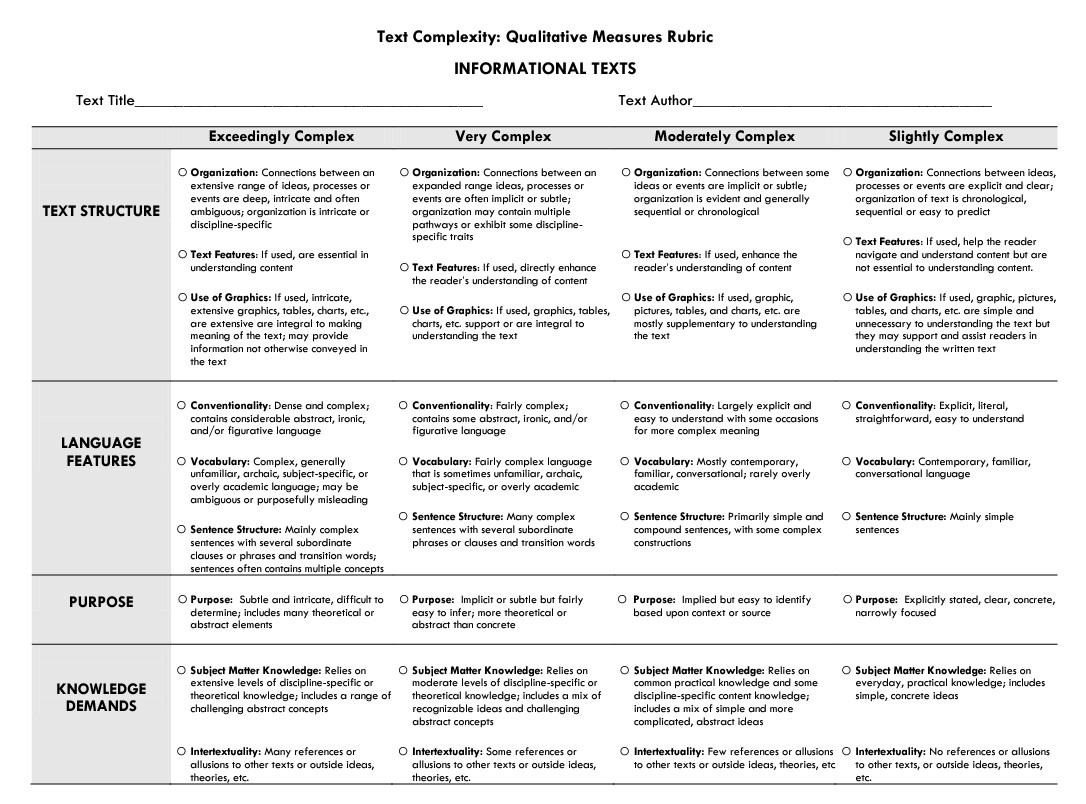

In addition, using a high-quality curriculum evaluated by EdReports will help ensure text is complex, meeting the qualitative measures.
Reader and Task
The final step in determining text complexity is making sure it meets the reader and the task intended. Timothy Shanahan notes that this step relies on the professional judgment of the educator based on:
To ensure students are challenged, it is important to balance the difficulty with adequate supports. The chart below eplains how gradual release provides students with decreasing levels of support as they are introduced to the text and learn the skills needed to make meaning.
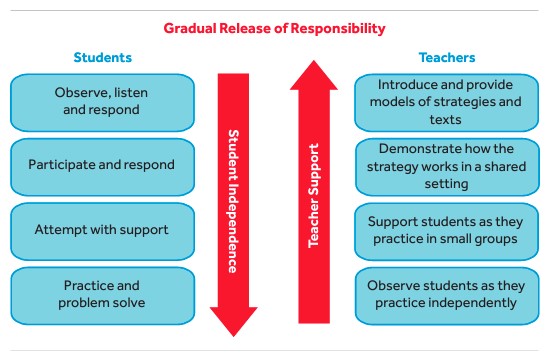
Using the text you described in Text I Use in Instruction, answer the following question in the High-Quality Instructional Materials for Each Child Open Space group. Fiind the post Complex Text Check in the Discussion tab.
Fetch is avaiable to INFOhio automated schools. If you are an INFOhio school, please log in with your school username/password using the button at the top-left corner of this page.
For more information about Fetch, please visit the Fetch information page or contact INFOhio support at https://support.infohio.org.